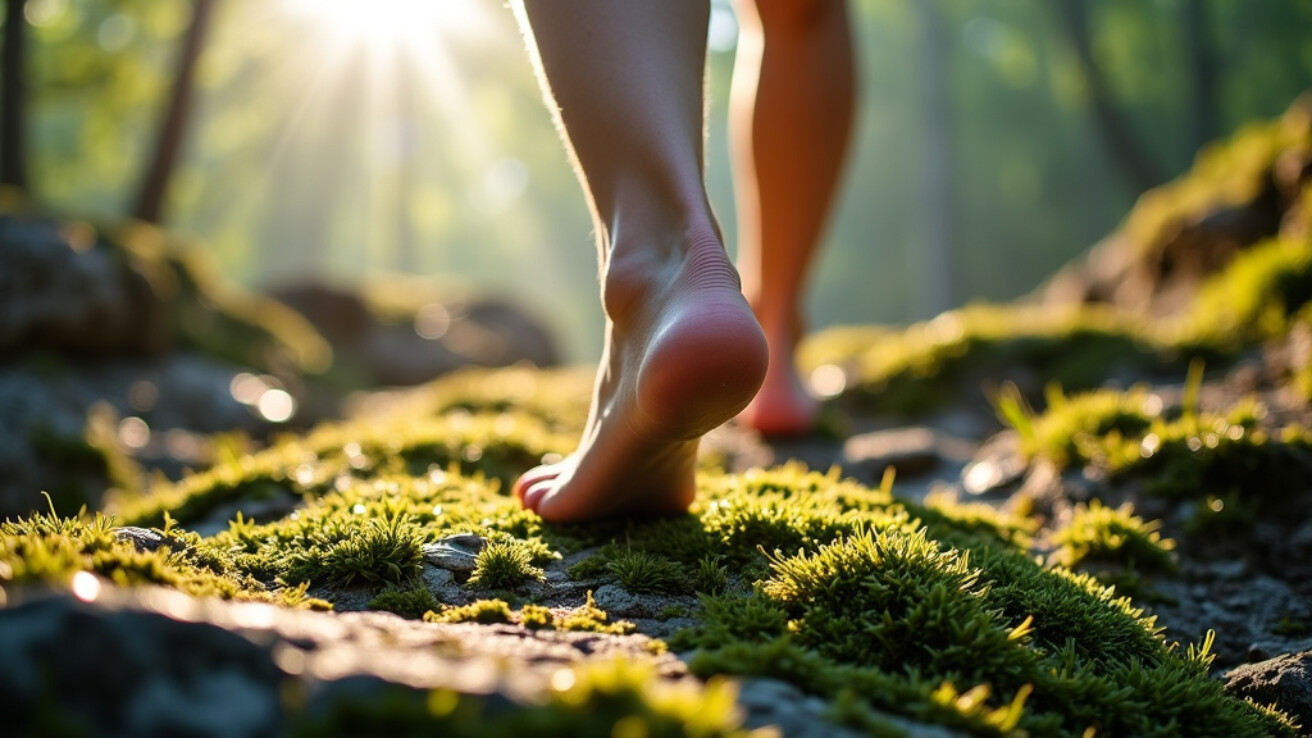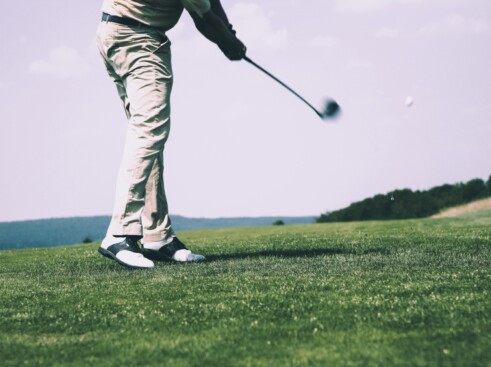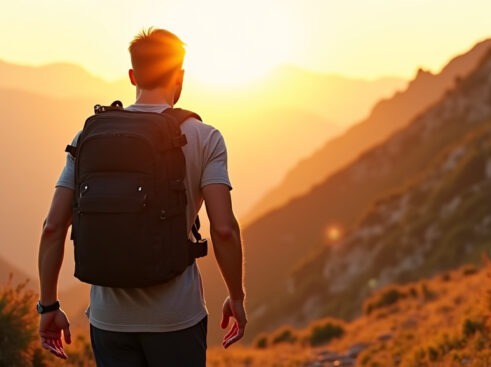Imagine rediscovering the primal joy of feeling every contour of the trail beneath your feet while still protecting them from the elements. Barefoot hiking shoes deliver this experience – combining natural movement with essential protection to enhance how outdoor enthusiasts experience the wilderness.
Did you know that your feet contain over 200,000 nerve endings designed to help you navigate terrain? Traditional hiking boots often mute these sensations, but barefoot hiking shoes work with your body’s natural biomechanics to enhance balance, strengthen foot muscles, and improve overall stability on the trail.
As we explore the world of barefoot hiking shoes, you’ll discover how their distinctive features – from flexible zero-drop soles to roomy toe boxes – enhance your hiking experience.
Understanding Barefoot Hiking Shoe Technology
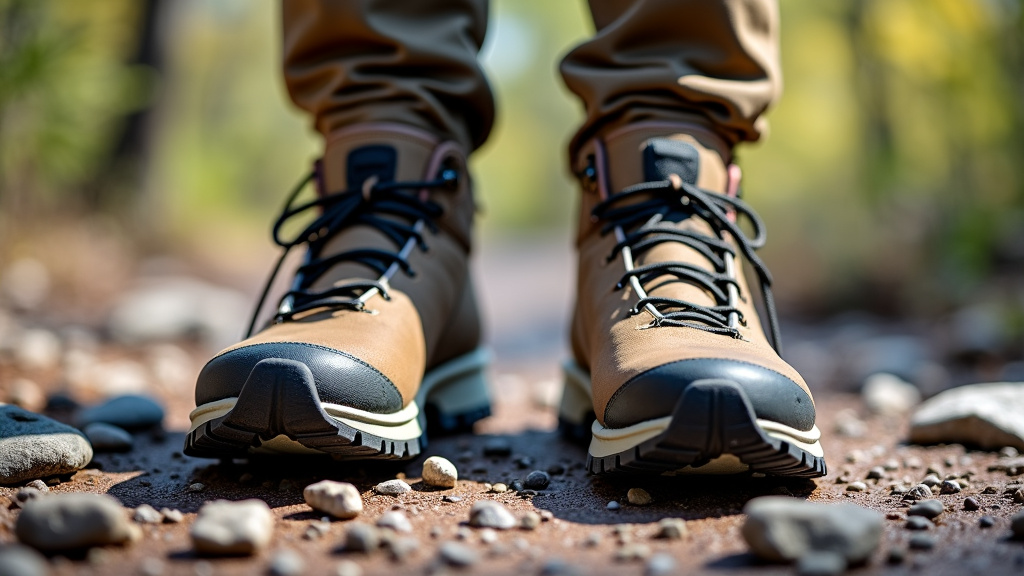
Traditional hiking boots have dominated trails for decades with their sturdy leather construction, elevated heels, and restrictive toe boxes. Barefoot hiking shoes, however, offer a fundamentally different approach to trail footwear design.
The defining feature of barefoot hiking shoes is their zero-drop sole design, which maintains your heel and toes at the same height. This alignment mimics natural foot positioning and promotes proper biomechanics during hiking.
Unlike conventional boots that compress toes together, barefoot hiking shoes feature an anatomically-shaped wide toe box. According to a study by Natural Footgear, this design enables natural toe splay, enhancing balance and stability on uneven terrain.
Most barefoot hiking shoes employ minimal cushioning, typically just 2-6mm of material between your foot and the ground. This thin, flexible sole enhances ground feel and proprioception – your body’s awareness of its position in space.
The lightweight construction of barefoot hiking shoes provides a significant advantage over traditional boots. While conventional hiking boots can weigh up to 3 pounds, barefoot options typically weigh less than 1 pound, reducing fatigue during long treks.
Key Benefits of Barefoot Design
I’ve found that the natural foot movement encouraged by barefoot hiking shoes strengthens foot muscles that conventional boots often restrict. This increased muscle engagement leads to better balance and stability over time.
The enhanced ground feel through the minimal sole enables quick responses to terrain changes. You’ll detect subtle variations underfoot that thick boot soles might mask, potentially preventing ankle rolls and slips.
Barefoot hiking shoes also promote proper ankle mobility rather than restricting it. The flexible design allows your ankles to move naturally and develop strength, instead of relying on artificial support.
That said, transitioning to barefoot hiking shoes requires patience. Your feet need time to adapt after years in conventional footwear. I recommend beginning with shorter hikes and gradually increasing distance as your feet strengthen.
While barefoot hiking shoes aren’t for everyone, their innovative design features provide compelling benefits for those seeking a more natural hiking experience. The combination of zero-drop soles, wide toe boxes, and minimal cushioning creates footwear that works with your body’s natural biomechanics rather than against them.
Top Barefoot Hiking Shoe Brands
Three pioneering brands lead the market in creating authentic connections between feet and trail: Vivobarefoot, Xero Shoes, and Merrell. Each offers a distinct philosophy to barefoot hiking.
Through extensive testing across challenging terrains, I’ve discovered that these brands deliver unique approaches to the minimalist hiking experience. Let’s examine what distinguishes each brand.
Vivobarefoot: The Premium Trail Companion
Vivobarefoot excels with premium materials and anatomically-shaped designs that mirror natural foot shape. Their meticulous construction quality is evident in every detail.
The brand’s signature Tracker model features a weatherproof yet breathable upper that performs exceptionally in wet conditions. The ultra-thin puncture-resistant sole delivers outstanding ground feel while maintaining protection.
What distinguishes Vivobarefoot is their commitment to sustainability. Their use of recycled materials and ethical manufacturing processes appeals to environmentally conscious hikers.
Xero Shoes: The Versatility Champion
Xero Shoes leads the barefoot hiking category with their FeelTrue® soles, backed by an impressive 5,000-mile warranty that demonstrates their durability. Their designs excel in both performance and practicality.
The Mesa Trail model exemplifies Xero’s innovative approach to barefoot hiking. Its unique traction pattern provides superior grip on wet rocks and loose gravel.
I’ve found their shoes excel in versatility, moving effortlessly from rocky trails to urban settings. The wide toe box enables natural toe spread, improving balance and stability.
Merrell: The Trusted Traditional
Merrell applies decades of hiking shoe expertise to their barefoot line, creating designs that blend familiarity with innovation. Their Trail Glove series sets the standard in minimalist hiking footwear.
The integration of Vibram® soles delivers dependable traction while preserving essential ground feedback. The balance between protection and sensitivity is precisely calibrated.
Merrell’s strength lies in their focus on helping traditional hikers transition to barefoot shoes. Their designs incorporate subtle cushioning without sacrificing the barefoot experience.
Based on thorough testing in varied conditions, each brand proves superior for specific uses. Your ideal choice depends on your hiking preferences and typical trail conditions.
Benefits of Hiking in Barefoot Shoes
Imagine taking your first step on a forest trail and feeling the subtle contours beneath your feet. That’s the transformative experience barefoot hiking shoes offer – a remarkable blend of protection and sensory connection with nature.
I’ve spent years analyzing footwear trends, and the science behind barefoot hiking shoes reveals compelling benefits. According to MoveU, these specialized shoes can increase foot strength by up to 60% in just six months of regular use.
Let’s explore how these innovative shoes enhance your hiking experience in several key ways.
Enhanced Foot Strength and Natural Movement
Traditional hiking boots often restrict foot movement, but barefoot shoes allow your feet’s intrinsic muscles to engage naturally. Think of it like letting your feet go to the gym – every step strengthens the 26 bones and over 100 tendons in each foot.
The wide toe box in barefoot hiking shoes lets your toes spread naturally, like roots of a tree seeking stable ground. This natural toe splay improves balance and stability on uneven terrain.
Without excessive cushioning, your feet work harder, leading to stronger arches and more resilient foot muscles. It’s nature’s way of building a solid foundation for your hiking adventures.
Improved Balance and Proprioception
Your feet contain nearly 200,000 nerve endings, and barefoot shoes help you utilize this incredible sensory network. The thin, flexible soles allow your brain to receive detailed feedback about the terrain beneath you.
This enhanced ground feel leads to better proprioception – your body’s awareness of its position in space. When hiking on challenging trails, this improved sensory feedback helps prevent trips and falls.
I’ve noticed that hikers who switch to barefoot shoes report feeling more confident on technical terrain after their feet adapt to the new sensations.
Natural Gait and Reduced Joint Stress
Traditional hiking boots with raised heels can force an unnatural walking pattern. Barefoot shoes, with their zero-drop design, encourage a more natural midfoot strike rather than heel-first impact.
This biomechanical advantage helps distribute impact forces evenly throughout your feet and legs. It’s like having shock absorbers built into your natural movement pattern.
The minimal design promotes better posture and alignment, potentially reducing stress on your knees, hips, and lower back during long hikes.
Long-term Foot Health Benefits
Regular use of barefoot hiking shoes can help prevent common foot problems like bunions and hammertoes. The natural toe positioning and movement patterns strengthen foot structures rather than relying on artificial support.
Many hikers report experiencing fewer blisters and hot spots when using properly fitted barefoot shoes. The flexible materials allow your feet to move and breathe naturally.
Think of barefoot hiking shoes as training wheels for your feet’s natural abilities – they provide just enough protection while allowing your feet to develop their inherent strength and functionality.
Transitioning to Barefoot Hiking Shoes
The journey from traditional hiking boots to barefoot shoes requires patience and deliberate practice. Your feet have likely spent years relying on artificial support, and they’ll need time to rebuild their natural strength.
I’ve guided numerous hikers through this transition, and I’ve found that success comes from a methodical approach focused on gradually strengthening your feet. The key is starting slowly and listening to your body’s signals.
Think of your feet as muscles that have been underutilized – they need time to reach their full potential.
Essential Foot Strengthening Exercises
Before hitting the trails in barefoot shoes, build up your foot strength. These exercises, recommended by movement specialists at Inov8, form the foundation of foot conditioning.
Start with ankle rolls, making large circles both clockwise and counterclockwise. This simple movement develops mobility in your ankle joint and activates the surrounding muscles.
Next, practice toe curls – imagine picking up marbles with your toes. Perform three sets of 20 repetitions to strengthen the intrinsic muscles of your feet.
Try towel tugs while seated – loop a towel around your foot and gently pull it toward your body until you feel a stretch in your calf. This improves flexibility and foot strength simultaneously.
Balance work is essential. Stand on one foot for 30-60 seconds, progressing to closed eyes once stable. This develops the stabilizing muscles needed for trail navigation.
| Exercise | Description | Benefits |
|---|---|---|
| Pointing Toes | Lift one foot, roll it downward until the toes point towards the ground and flex the foot. | Relieves pain, stretches small foot muscles. |
| Raising Heels | Stand up, lift heels off the ground, standing on the balls of your feet. | Relieves toe cramps, strengthens calf and arch muscles. |
| Sit Down Stretches | Sit, cross one leg over the other, hold toes and bend them back towards the shin. | Relieves plantar fasciitis, improves flexibility. |
| Toe Curls | Use toes to pick up small objects like marbles, placing them in a bowl. | Strengthens muscles along the foot’s bottom. |
Starting Your Trail Journey
Once you’ve established baseline strength, begin incorporating barefoot shoes into your hiking routine. Make the transition gradual and systematic.
Start with short, flat trails you already know well. These familiar paths allow you to focus on your form rather than route-finding or challenging terrain.
Limit initial barefoot shoe hikes to 15-20 minutes. Monitor any unusual sensations or discomfort – muscle fatigue is normal, but sharp pain signals you to stop.
After each hike, assess your body’s response. Notice which parts of your feet and legs worked harder than usual, and use this feedback to guide your strengthening routine.
Increase your hiking time by 10-15 minutes each week, provided you’re not experiencing persistent discomfort.
Advancing Your Practice
As your feet adapt and strengthen, progress to more challenging terrain. Keep the progression thoughtful and measured.
Select trails with varied surfaces – combine smooth sections with areas of small rocks or roots. This variety develops foot agility and proprioception.
Keep your traditional hiking boots in your pack during early transition hikes as backup, though try to work through minor discomfort before switching.
Remember that transitioning to barefoot hiking shoes affects your entire walking pattern. Your calves and ankles will likely work differently than before.
Listen to your body and adjust accordingly. Some days may require scaling back, while others you’ll feel ready for more challenge.
Choosing the Right Barefoot Hiking Shoe for Your Needs
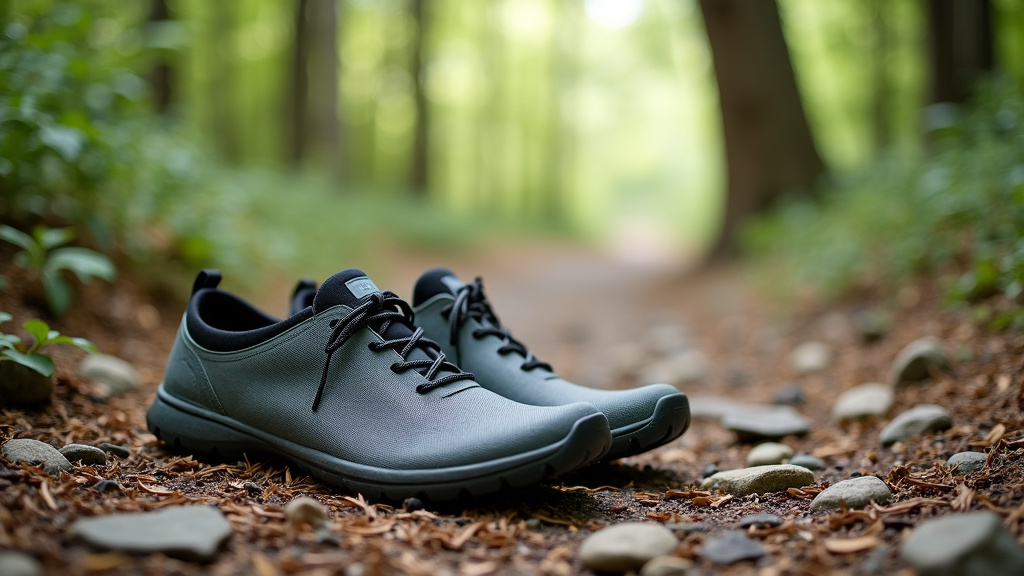
Selecting the perfect barefoot hiking shoe isn’t a one-size-fits-all endeavor. As someone who’s tested dozens of minimalist hiking shoes across varied terrains, I’ve learned that your choice should align with your foot’s unique characteristics and hiking environment.
Consider these key factors that will guide you toward your ideal barefoot hiking companion. The right shoe can transform an ordinary hike into an invigorating trail experience.
Understanding Your Foot’s Unique Needs
Before considering any specific models, assess your foot shape and volume. Are your feet particularly wide? Do you have a high instep? These characteristics will significantly influence which shoes will work best for you.
As noted in a comprehensive study by Barefoot Shoe Guide, feet with high volume may need additional space, while those with narrow heels might require different lacing techniques for secure fit.
Consider your transition stage too. If you’re new to barefoot shoes, you might want to start with models offering moderate cushioning (around 10-15mm stack height) before progressing to more minimal options.
Matching Shoes to Your Terrain
Different trails demand different features from your footwear. The type of terrain you’ll frequently encounter should heavily influence your choice.
For rocky trails, look for shoes with adequate toe protection and slightly thicker soles (6-10mm) to prevent stone bruising. However, if you’re primarily hiking on softer forest paths, you might prefer something more minimal for enhanced ground feel.
Weather conditions in your area also play a crucial role. Wet climates require shoes with deep lugs and quick-drying materials, while hot, dry environments benefit from breathable mesh uppers.
Climate and Seasonal Considerations
Your local climate and seasonal changes should factor significantly into your decision. Consider these essential elements:
For summer hiking, prioritize breathability and quick-drying capabilities. Look for shoes with mesh uppers and good ventilation to keep your feet cool and prevent excessive sweating.
Winter adventures require different features – water resistance, slightly more insulation, and potentially deeper lugs for better traction on wet or muddy surfaces. Some hikers opt for a size up to accommodate thicker socks during colder months.
Personal Comfort Preferences
While barefoot principles emphasize minimal interference with natural foot movement, your comfort preferences matter. Some hikers prefer maximum ground feel with ultra-thin soles, while others need more protection.
Consider how you’ll use the shoes. Will they be exclusively for hiking, or do you need them to transition well between trail and town? This versatility factor can influence your choice between more specialized versus all-around models.
Remember, the perfect barefoot hiking shoe is the one that makes you forget you’re wearing it while keeping your feet protected and comfortable on the trails.
Caring for Your Barefoot Hiking Shoes
Proper maintenance of barefoot hiking shoes extends beyond basic cleaning – it’s essential for preserving performance and extending lifespan. These care techniques will help maintain your minimalist footwear in optimal condition.
Essential Cleaning Techniques
Start your cleaning routine by removing loose dirt with a soft brush. This prevents abrasive particles from damaging the shoe materials during deeper cleaning.
Mix a small amount of mild detergent with warm water for the main cleaning. Always clean the upper fabric part by hand using a damp cloth, as machine washing can damage these specialized shoes.
For stubborn dirt, focus on problem areas with gentle circular motions. Remember that barefoot shoes use softer, more flexible materials than traditional hiking boots, so avoid harsh cleaners like bleach.
After cleaning, rinse thoroughly with clean water to remove all soap residue. Any leftover detergent can stiffen the materials and affect the shoe’s natural flexibility.
Pay special attention to the insoles, which can harbor odor-causing bacteria. Remove and clean them separately using the same mild soap solution.
Proper Drying and Storage Methods
Drying barefoot hiking shoes requires patience. Never expose them to direct heat from radiators or sunlight, as this can damage the materials and affect their performance.
Instead, stuff your shoes with newspaper or absorbent paper to help draw out moisture. Replace the paper as needed until the shoes are completely dry.
Store your shoes in a well-ventilated area at room temperature. Avoid enclosed spaces where moisture can accumulate and lead to unwanted odors or material degradation.
Consider using natural deodorizers like baking soda between uses to maintain freshness. Simply sprinkle a small amount inside the shoes overnight and shake out in the morning.
For long-term storage, clean your shoes thoroughly and ensure they’re completely dry before storing. This prevents mold growth and material deterioration.
Recognizing When to Replace Your Shoes
Even with excellent care, barefoot hiking shoes won’t last forever. Watch for signs of significant wear on the sole, especially uneven wear patterns that could affect your gait.
If you experience new aches or pains during hikes, your shoes may no longer provide proper support. Pay attention to how your body feels after use.
Examine the upper material regularly for signs of separation from the sole or significant wear. Small issues can quickly become bigger problems on the trail.
Quality barefoot hiking shoes typically last between 350-500 miles of regular use. Track your mileage to help gauge when replacement might be necessary.
When you notice these warning signs, replace your shoes promptly. Using worn-out footwear can lead to discomfort and potential injury on the trail.
Embrace the Barefoot Hiking Experience
The journey to better hiking begins with understanding how our feet naturally interact with the terrain beneath us. Minimalist hiking shoes offer an innovative approach to outdoor adventures, providing an ideal balance between protection and natural movement.
Studies have shown that minimalist hiking shoes can reduce stress on your joints and improve overall posture. When hiking in these shoes, you’ll experience increased muscle activation and better balance, helping you navigate challenging trails with greater confidence.
A key benefit is the enhanced sensory feedback from the ground. As noted in recent research, minimalist shoes enable improved weight distribution and maneuverability on varied terrain.
The lightweight design means less fatigue on long trails, while the flexible soles promote natural foot movement and stronger foot muscles. Your feet will develop greater resilience and adaptability to different surfaces.
As you embrace this natural approach to hiking, you’ll discover a deeper connection with the outdoors. The thin, responsive soles allow you to feel the texture of the trail while protecting your feet from sharp objects and rough terrain.
Whether you’re a seasoned hiker or just starting your outdoor journey, minimalist hiking shoes can enhance your trail experience. The combination of improved balance, strengthened muscles, and enhanced ground awareness creates an immersive and rewarding adventure.



